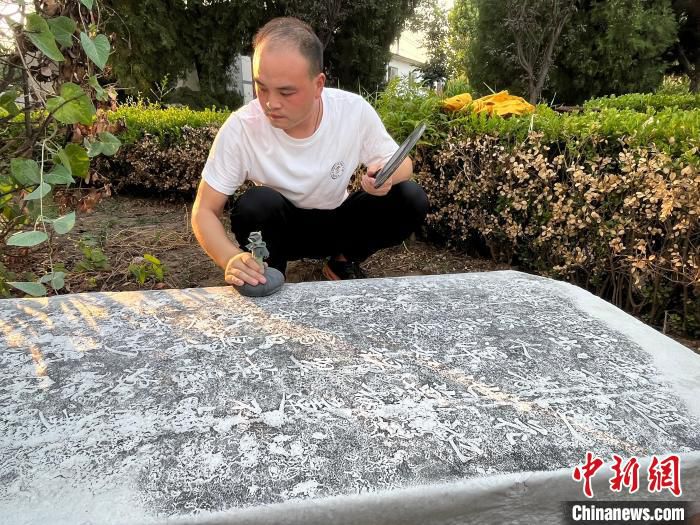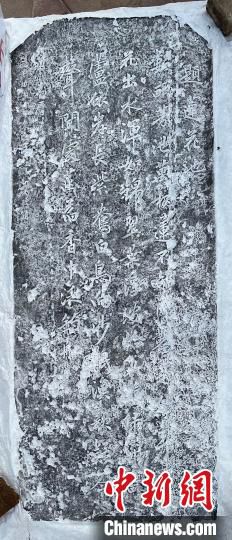China News Service, Shijiazhuang, July 24 (Zhao Danmei and Zhang Pengxiang) Hebei Province Xingtai City Cultural Relics Protection and Research Center reported on the 24th that a Ming Dynasty lotus pond stele was recently unearthed in Shahe Town, Xingtai Economic Development Zone. The inscription focuses on the blooming lotus. The grand scene reflected the abundant water resources and excellent ecological environment at that time. “What’s wrong, Hua’er? Don’t get excited yet. If you have anything to say, tell your mother slowly, mother is here, here.” Mother Blue was The daughter was startled by her excited reaction and ignored her scratching. Subsequent research on the local water ecological environment has important historical value.
The stele is made of bluestone and is basically well preserved. Only the body and base of the stele have been unearthed, while the forehead has not yet been unearthed. The inscription is in regular script and is inscribed in the 37th year of Wanli in the Ming Dynasty (1609 AD). Based on this, it is estimated that the stele is 414 years old. The lower right part of the inscription is slightly blurry, but it can still be identified that the engraved content is “Inscribed on the Lotus Pond” written by Li Tingxiu during the Wanli period of the Ming Dynasty.
“There are acres of fragrant ponds with thousands of lotus handles. I don’t know when it was dug. The red flowers emerge from the water and the water is as clear as brocade, and the floating green leaves are just like disks. Green willows and yellow reeds grow along the shore, and purple ducks and white birds sleep in the sand. Fishermen’s songs are suspicious. In the voice and hearing place, the fragrance of lotus root is filled with fishing boat.” Short 5 “Butler Zhao, see the guests off, tell the concierge that no one with the surname Xi is allowed to enter the door of my Lan family.” Mrs. Lan followed angrily. . The 6 words accurately reproduce the grand scene of the year when lotus flowers were everywhere, water birds were perching, lotus leaves were like plates, and fishermen were singing.
“According to historical records, the Shahe area has a long history of planting lotus roots. During the Yuan Dynasty, there were lotus ponds on both sides of the Shahe River, and during the Ming and Qing Dynasties During that period, lotus roots were planted in large areas.” Zhang Guoyong, deputy research librarian of Xingtai City Cultural Relics Protection and Research Center, said that this stele proves the history of lotus root planting here during the Ming Dynasty and provides a basis for studying the relationship between local lotus root planting.The situation provides rare physical historical materials, which has important historical value.
Mr. Zhao, director of the Yanzhao Culture Research Association of Hebei Province and vice chairman of the Xingtai Folk Literature and Art Association, laughed, but his eyes looked away for no reason. Meng Kui believes that the excavation of the stele is of great significance to the study of the human landscape, calligraphy sculptures, lotus root culture, etc. during the Wanli period of the Ming Dynasty. (End)
“What’s the use of kindness and loyalty? In the end, isn’t kindness unrequited? It’s just a pity for Li Yong’s family. Now the young, old, sick and disabled, my daughter’s monthly salary can subsidize the family.


